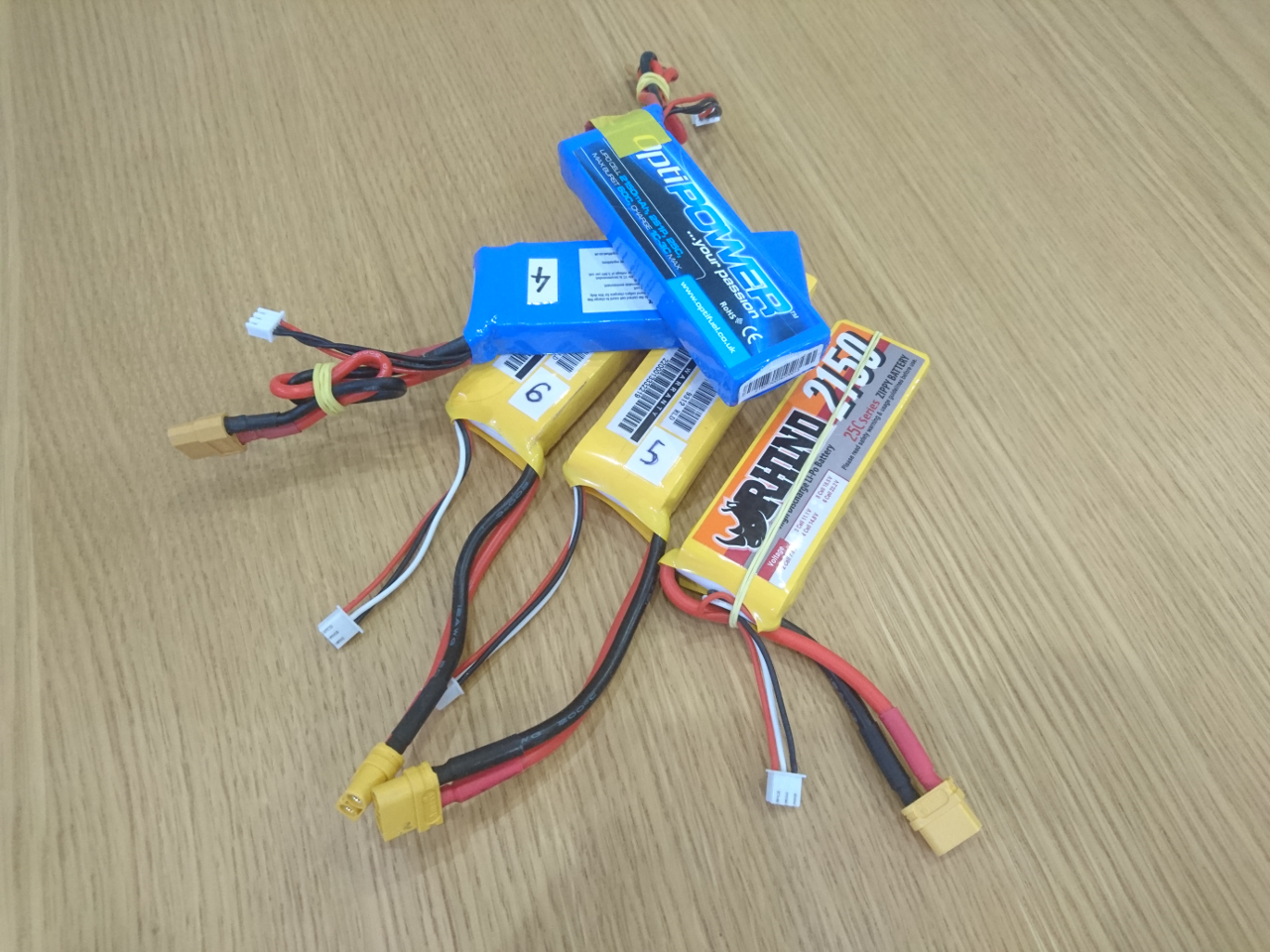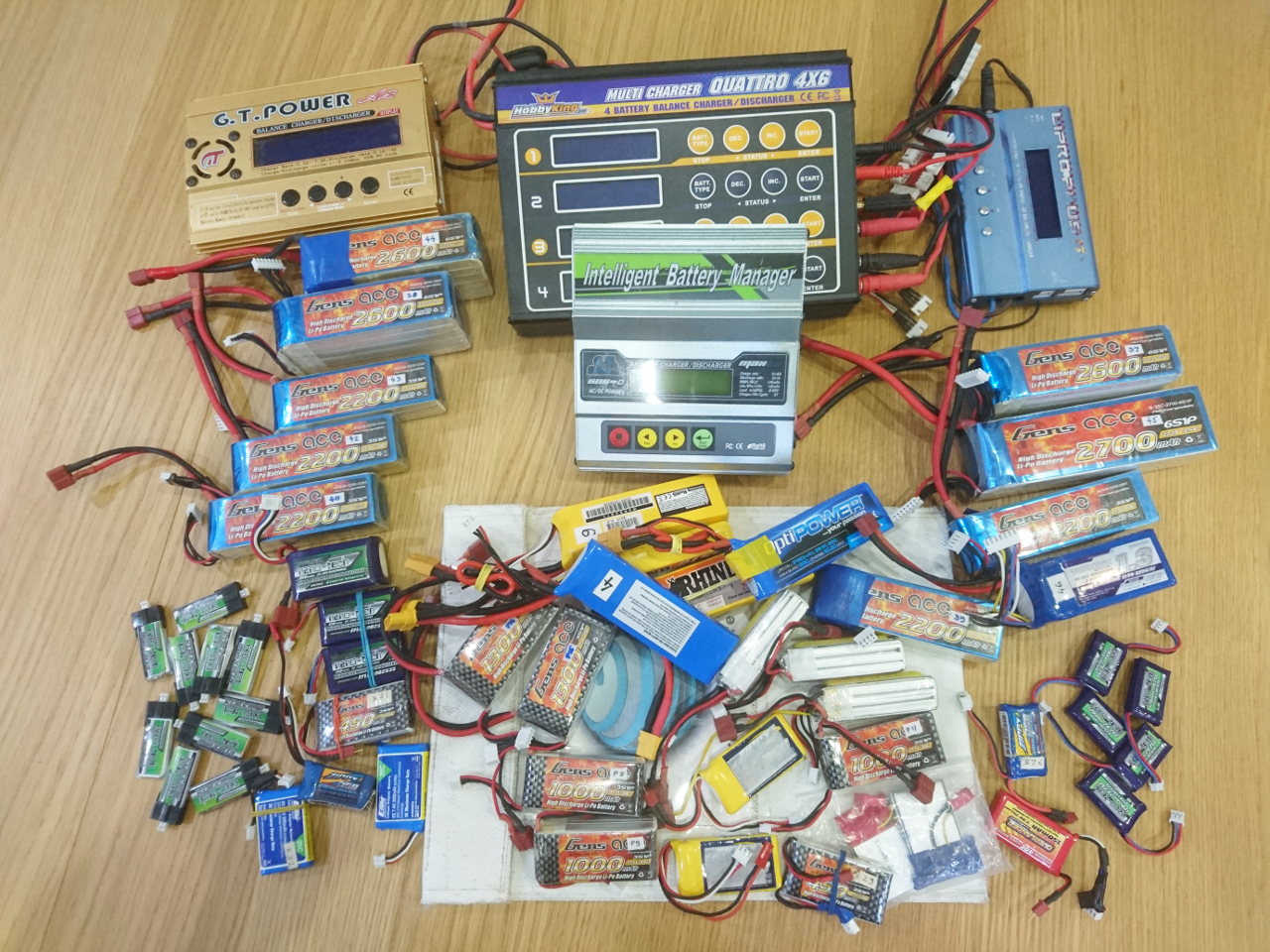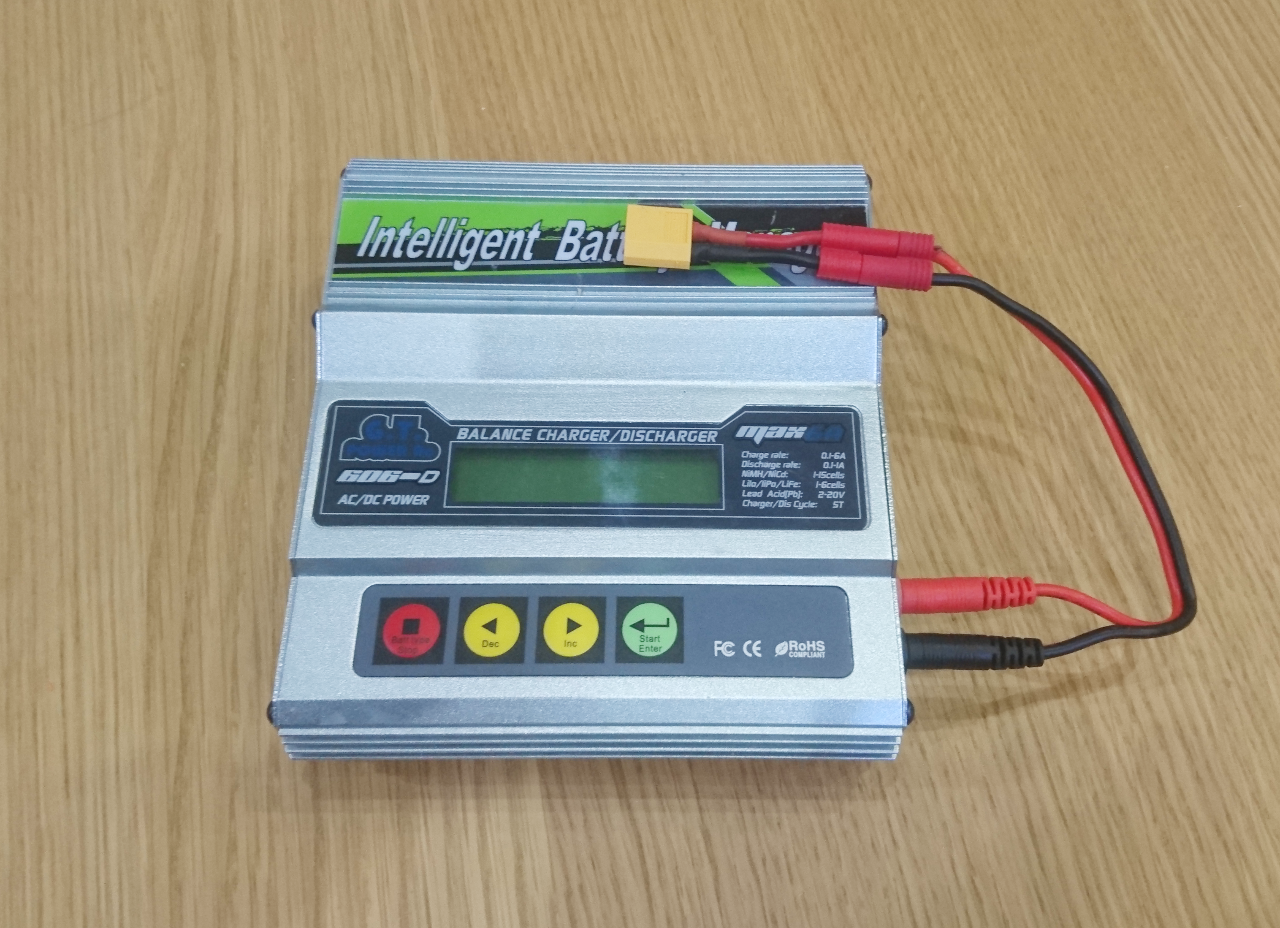YRumbling About LiPo batteries
This is originally written as a 'manual' for our club members that are borrowing rovers. As our rovers operate on LiPo batteries and they need special care, here is what one should know about how to handle LiPo batteries safely. Here are batteries we use with our rovers:

LiPo Batteries
Our rover uses batteries that are two cell (nominally 7.4V) Lithium Polymer batteries. They provide quite a strong current and thus they are very dangerous if shorted. A short would generate high heat and can even cause the battery to explode.
Charging
Batteries are charged using the ‘LiPo Balanced’ option on the charger. The voltage is 7.4V (two cells) and the current needs to be set between 1A and 2A. The batteries we have shouldn’t be charged with stronger current than 2A as it can damage them. Our batteries are 2100mAh with a ‘C’ rating that is calculated by dividing that number by 1000 (2.1A in our case). Normally batteries are charged at around 1 C and the batteries we have can provide up to 25C as per manufacturer’s description. When that is multiplied with 2.1A it comes up to them being capable of providing to ~50A of continual current. Fortunately our rovers do not ‘consume’ more than 1A up to 2 or 3A at peaks. That allows our batteries to last much longer between charges.Charging batteries means making each LiPo battery cell charged up to 4.2V (8.4V together) and balanced means that they are charged in such way that each cell is separately ensured not to go over that voltage. That is achieved by connecting the battery with, not only the orange ‘beefier’ connector, but the smaller white to the charger as well. Balanced charging won’t start if battery is connected wrong way round (as that would be horrible fire risk) and the balance lead connected to the side of charger as well. Make sure that you connect balanced lead first and then, only then connect main connector – just in case, by accident, you force balancing to lean the wrong way in. This shouldn’t happen (nobody should be able to do it), but just as a precaution.
The normal charging cycle should last between 20 minutes up to an hour (if the battery is depleted and/or cells are badly out of balance). It is not a problem if it finishes sooner. During charge you can press inc/dec buttons on the charger and see each cell’s voltage. Batteries with LiPo chemistry should not be discharged more than 80% and as good practice we don’t really go below 60%. Percentage is calculated upon the finished charge where the number mAh displayed is divided by battery’s nominal capacity (in our case 2100mAh), so, in our case we shouldn’t be, really, returning more than 1200-1400mAh back to the battery. In case the battery ‘accepted’ around 1800mAh it is still acceptable and battery shouldn’t have been harmed a lot, but everything over that is directly shortening battery’s life. Another rule of thumb is that individual cell’s voltage shouldn’t really go below 3.7V. Literature is talking about 3.3V and 3.0V but if the battery is stressed that much it usually means that it is already harmed. Also, good batteries, when discharged for around 80% of their capacity will hold (resting) voltage levels around 3.7V anyway. When the battery's voltage is below 3.7V without load, it usually means that the battery is used for more than its nominate capacity or is already severely damaged through over-discharging, pulling current much greater over the manufacturer's specs of battery has lost its capacity through age.

The Charger
The charger is operated using inc/dec buttons, the start button and for starting charging pressing start (which is at the same time ‘enter’) button slightly longer until battery emits sound then one more time to initiate charging. Pressing stop (The red button, on the opposite end to the start button) stops charging but it is only needed to be pressed in case you want to abandon charging. Normally when the battery is fully charged charger will make a sound and display a message on the screen. Do not leave battery connected to charger after it has been charged. Or, even worse when when charger is switched off. Batteries can be discharged by some leaking current and over-discharging this battery will definitively ruin it! The same goes for the rover: Never leave a battery connected to the rover as it will definitively spoil the battery completely.What Then?
LiPo batteries have very good charge retention and can be left without being charged for long periods of time (years?!). The downside is that those batteries do not ‘like’ being left fully charged for long periods of time (that can harm them as well) so – cell voltage between 3.8V and 4V is ideal for storage.How Long?
Empirically we’ve came to conclusion that our rover, no matter what is being done and how hard it has been made to whiz around, can operate safely with one LiPo battery for at least 1 hour. Probably two. Using it for over two hours would lead it to over discharge.LiPo Bag
The LiPo bag is an safety 'device' - something that should be used each time batteries are charged. It is fire proof, fibreglass fabric bag which in unlikely case of something going wrong with the LiPo battery being charged will contain fire. (hopefully this never happens!)
Last Note
I was told to make this post slightly less scary. So here it is:If you are to use the batteries according to the manufacturer's recommendation and you never short it, puncture it, drop them (or hit it with a stick), overcharge it, overheat it or do anything mentioned here - all will be fine! ![]() See - there's even a smiley!
See - there's even a smiley!